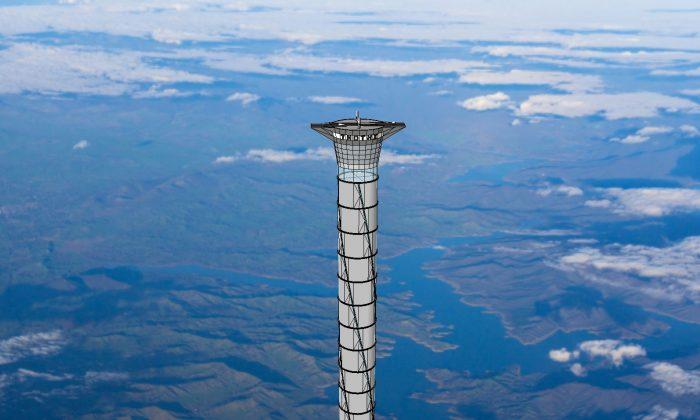Space travel is expensive. On lengthier trips, most of the rocket fuel is used to propel the rest of the rocket fuel along the way. Naturally, engineers in the space industry are constantly looking for ways to streamline the process.
One idea involves launching spacecrafts, pulled up by an elevator, from the top of a tower several miles high, allowing the mission to save valuable rocket fuel that would otherwise have been spent on escaping the earth’s gravitational pull.
Last month, the blueprint for such a tower was finally patented by Thoth, a Canadian tech company. The tower would be 9 miles tall—12 miles above sea-level at the peak when built atop a 3-mile high mountain—comprising of torus-shaped gas-cells stacked on top of each other, all held together by a Kevlar frame.
Brendan Quine, the author of the patent, claims that the tower could reduce the fuel usage of missions to orbit by 30 percent. Quine is the CTO of Thoth and an engineering professor at Toronto’s York University.
Quine began working on the design more than five years ago, when he and a team of engineers from York built a three-story prototype of the space tower. Initially priced at $2 billion, Quine now says that the project building the tower could cost $5 billion, reported CBC.
The project needn’t be funded by a national government. Quine said it could be a profitable venture for private companies that could turn the space tower into a space-themed resort featuring restaurant and hotels, reported CNN.
The patent has been greeted with incredulity by some engineers, who fail to see how the thin free-standing structure could withstand being assailed by wind.
“The graphics don’t show any tethers or taper, and the sides are not obviously wind permeable,” Andrew J. Lockey, a geo-engineering consultant, wrote on an engineering forum he moderates. “This means the torque at the base will be enormous. It’s just not clear how it will actually stay up.”
Quine had previously stated that the structure would counter-act wind pressure simply by leaning against it when needed.
Another poster on the forum, an author of a book on atmospheric turbulence, pointed out that the structure would need occasional de-icing, which could be expensive at such high altitudes.
Others on the forum raised question about how the structure would stand straight without buckling under its own weight and how much rocket fuel the project could actually save.
Quine is undaunted, referring to a previous paper he authored that explains why the torus-shaped units wouldn’t buckle under its own weight like normal structures, according to Tech Insider.
In fact, he wants to go higher. In a statement from 2009, Quine said that he could see the structure going 120 miles above sea level, 10 times the height of the structure in the patent.






Friends Read Free